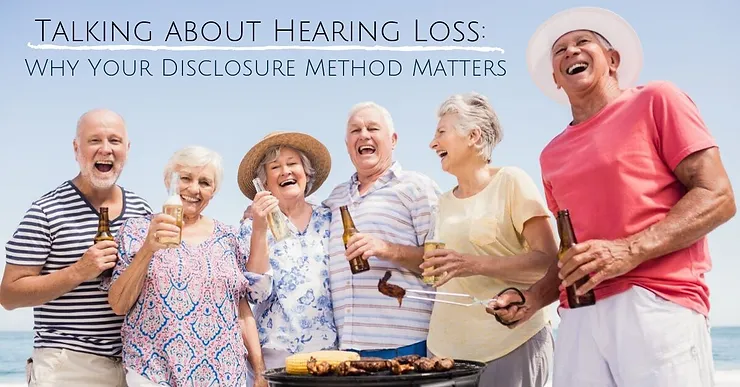
Most of us know the significance of communication in the relationships with our loved ones. An open channel of communication forms successful interactions, and when we are unable to discuss emotions, issues, and solutions, these relationships can break down.
There are however, several ways to tell others about conditions that may be affecting your ability to communicate, such as hearing loss. Believe it or not–there are actually studies that demonstrate that some methods of revealing your hearing loss are better and lead to more successful outcomes than others.
Three types of ways to talk about your hearing loss
In a study published in March 2016, scientists at the Massachusetts Eye and Ear Hospital researched the different ways in which individuals communicated their hearing loss to others and the effects of this method on their experience of hearing loss. This research engaged 337 individuals who responded to a brief survey on how their hearing loss was disclosed.
In evaluating the outcomes of the study, scientists discovered that the answers could be classified into three primary techniques of disclosure:
Non-disclosure – The group of individuals with the least effective technique of disclosure were non-disclosures. As the name indicates, this group did not like to speak about their hearing loss, and rarely stated that they had trouble hearing. Rather than admitting they are having problems with hearing loss, non-disclosures will point to problems in the way their speaker is talking, for example: “You’re talking too softly, please speak up.” They don’t want anyone to know that they have problems hearing, and hope that if they overlook their hearing loss no one will recognize. Unfortunately, this technique has very bad results, with non-disclosures facing problems understanding the thread of conversations, appearing rude or unintelligent to others, and ultimately ending up more socially isolated.
Basic Disclosure – Those who use this method successfully communicate that they had a hearing loss, but don’t give much more to others to promote communication. Although the individual provides an explanation for their inability to hear, they do not give a solution to help facilitate better communication. The speaker is not provided any instructions on how best to cope with their hearing loss, so they can explore accommodations that may not necessarily support in promoting speech comprehension, such as speaking louder.
Multipurpose Disclosure – Some who have experienced hearing loss will find a way to communicate their hearing ability, even with people they don’t know that well. This involves letting others know that they have a hearing loss, and then providing the best method to help alleviates problems understanding speech. For example, a multipurpose disclosure might ask their conversation partner to aim their words towards their ‘better’ ear, or request that they speak without covering their mouth or while eating.
Why Multipurpose Disclosure is Recommended
Helping others accommodate your hearing loss is important in facilitating communication in a variety of situations. No two hearing losses are the same, so by providing the absolute ‘best practice’ method of helping you hear, you will maximize the chances of a smooth and effortless conversation.
Hearing loss is more common than you think
Due to hearing loss stigma, individuals who experience hearing loss may want to prevent talking about hearing loss. However, we need to remember that hearing loss is a very common phenomenon:
-
Hearing loss is the third most widespread medical condition in the United States, impacting 20% of us.
-
It impacts people of all ages, with a particularly high prevalence among elderly Americans aged 65 and over.
-
One in three individuals aged 65 or older experience hearing loss and 50 percent of individuals over the age of 75 experience hearing loss.
When hearing loss is properly dealt with and the individual uses a multi-purpose disclosure method, the will be able to regain much of the quality of life they had before their hearing loss.
Clear Hearing and Audiology
By letting other know of your hearing loss, and also the best way to help with it, you will be in the best position to communicate effectively with everyone you interact with. Once you’re comfortable talking about your hearing loss, visit us for a hearing test. Our audiologist, Dr. Shivani Patel will be there for you every step of the way on your journey towards better hearing and a better quality of life.
